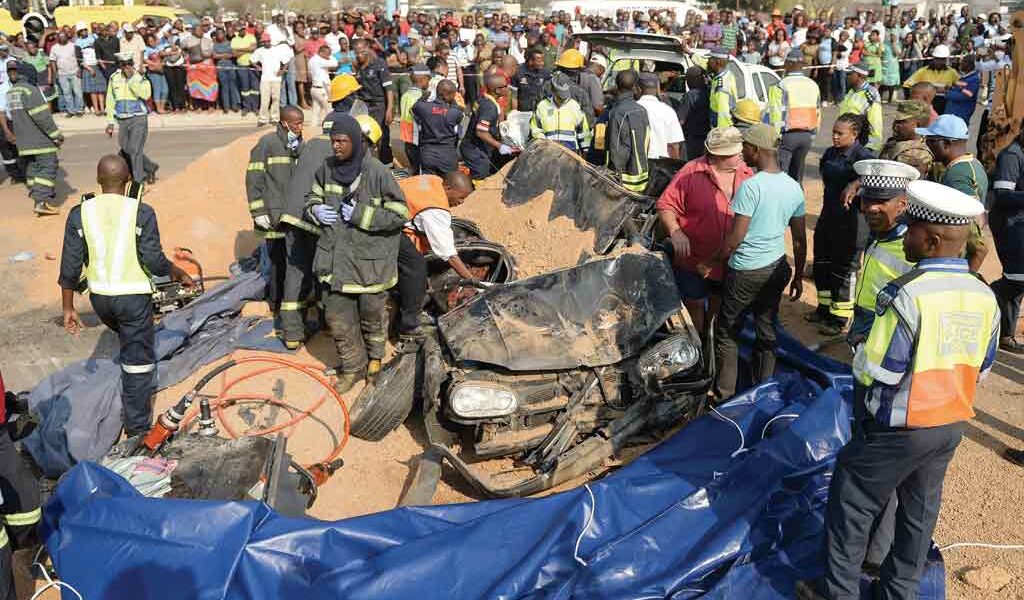Richard Moleofe
Friday was a real bad day for one family as their son was killed in a freak and yet tragic accident in Gaborone. The accident happened at the Fairgrounds intersection where a small car was crushed by a 44 ton truck with its heavy load of sand and gravel.
This accident happened before my eyes as I was only 300 meters away from the scene. People rushed from all directions to witness what had just happened.
Below the huge truck lay a Golf 4 vehicle with the driver trapped inside. People gave all they could in an attempt to rescue this one soul. Within minutes of the incident, Medical Emergency Services teams arrived with ambulances from all directions. Then followed the Fire Department with a huge fire truck.
It seems none of the respondents was prepared for what was at the scene of the accident. Well, there could be many factors contributing to this kind of response. One of the paramedics said they were never told what to expect when they received a call on the accident. In any way, sometimes as members of the public we fail to relay the right information especially when it comes to giving the right addresses.
But what unfolded on that Friday afternoon was a real circus and it made a mockery of our emergency response systems. It took close to two hours for the driver of the Golf 4 to be brought from underneath the truck. Members of the public had tried every effort necessary. The Fire Department produced two shovels and sand and gravel were pushed as fast as could be possible.
If this horrible accident had happened outside of the capital city, certainly the recovery exercise would have taken much longer. Let’s imagine such an accident happening in Dibete.
It is not the response time that I am bringing to question here, but rather it was a matter of coming to the scene with the right equipment for the magnitude of the vehicles involved.
There were a few Good Samaritans who stopped by with their trucks and attempted to tow off the truck in order to free the small car. At one point there were two trucks with cranes plus a front end loader (commonly known as a JCB). Regardless of the fact that the sand and gravel were off, the body of the truck was still far too heavy for the three machines.
Many of us who were at the scene wondered where Botswana Defence Force and Central Transport Organization were at the hour of need. Remember that this horrific accident had only happened three kilometres from Village which is the home of CTO and BDF.
These two organizations have sufficient resources to have overcome the problem. BDF has massive earth moving equipment at their Village Garrison while CTO is headquartered in the same vicinity and they equally have their major assets in that yard.
BDF was to later send in their massive lifter at the time when the rescue operation was coming to a close. I will not attempt to apportion blame on either one of these organizations, but rather the million euro question is who is responsible for coordinating such a rescue and with how much authority?
Certainly this country is endowed with a lot of resources to conduct most forms of rescue operations. The biggest problem lies in coordination. There is need to have a central command that will have the muscle and manpower to order departments into action at a split second. BDF is certainly always ready to perform if called to action.

